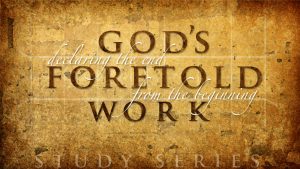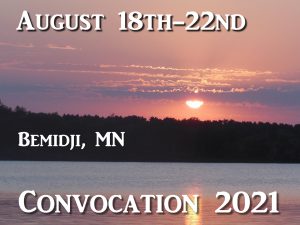I have used Dan 7:11 with Rev 19:20 to point out to those who hold the amillennial view that we cannot be in the millennium now, since the first resurrection happens in obvious connection with the destruction of the ‘final’ beast (Dan 7:11 with Rev 19:20) and the resurrection of the martyrs of the ‘last’ persecution (Dan 7:21-22; Rev 6:11; 13:7, 15; 20:4-5). That is a real hurdle for their position.
Clearly, the kingdom that is in view in Daniel’s prophecy does not prevail upon the earth until AFTER the destruction of the Antichrist. Only with the final removal of all false rule do the saints possess the kingdom “under the whole heaven.” This is shown by a comparison of Dan 7:11, with Dan 7:18, 21-22, 27. However, a closer look at the scripture will show that the kingdom that is “set up” upon earth “in the days of these kings” (compare Dan 2:44; 7:24 with Rev 17:12) is the same kingdom that was first awarded to the Son of Man upon His coronation when He ascended in clouds to take His seat at the Father’s right hand (Acts 2:34-36; Heb 12:2; Rev 3:21).
Dan 7:13 says, “I saw in the night visions, and behold, one like the Son of Man came with the clouds of heaven, and came to the Ancient of Days, and they brought Him near before Him. And there was given Him dominion, and glory, and a kingdom that all people, nations, and languages, should serve Him: His dominion is an everlasting dominion, which shall not pass away, and His kingdom that which shall not be destroyed.”
The Son of Man’s coming ‘to’ the Ancient of Days to be ‘brought near’ before Him (the Ancient of Days), would seem to be speaking, not of Jesus’ return, but of His victorious ascent to the right hand of God in heaven. Yet, we see Jesus applying the same language of the cloud-coming Son of Man to His return after the tribulation (Mt 24:30; Rev 1:7; 14:14). From this we see that the same One who ascended with clouds to receive the kingdom, returns with clouds (Mt 24:30; Mk 14:62; 1Thes 4:17; Acts 1:9-11; Rev 1:7) to enforce the power of His heavenly victory upon the earth with the destruction of the Antichrist (Dan 7:13; 2Thes 2:8; Rev 19:20).
Interestingly, the Son of Man is brought near to the Ancient of Days in Dan 7:13, but in Dan 7:22 it is the Ancient of Days that ‘comes’ to consume and destroy the dominion of the persecuting beast (i.e., the ‘little horn’ of Dan 7:8, 11, 20-21). Notice that the judgement is said to be ‘set’ (Dan 7:9-10, 26) at the same time that the beast is destroyed and his dominion ‘taken way’ (Dan 7:11 with Dan 7:26). Equally significant, this is the beast that is destroyed at the end of a final 3 1/2 year period of unequaled persecution (Dan 7:25; 9:27; 12:1, 7, 11).
Since the period separating two distinct advents of the Messiah was not clearly discernible until after the revelation of the gospel, we can see in hindsight that Daniel’s vision is inclusive of the whole sweep of God’s triumph through Christ, extending from the coronation of Jesus at the time of His glorious ascent, to His return in clouds after the tribulation to destroy the Antichrist, raise the righteous, and deliver the surviving remnant of Israel (Dan 12:1-2).
Part of the puzzle of Dan 7:9-10 is the remarkable similarity of language that is used in Daniel and again in Revelation to describe distinct judgments that are a thousand years apart. In Daniel, the judgment is ‘set’ and the ‘books are opened’ when the Ancient of Days comes to destroy the Antichrist (Dan 7:11, 21-22), whereas in Rev 20:12, the books are opened at the end of the thousand years.
Either we are to understand that the books are opened twice, or, more likely, Daniel is viewing the full sweep of divine judgment without distinguishing between the first and second resurrections, since the fate of those that will be raised at the second resurrection is already sealed at the time of the Lord’s return. It is a common feature of OT prophecy to blend into a single scene events that later revelation will show to be separated by a great span of time.
We find a key to this mystery by comparing the language of Dan 7 and Rev 20 with what we find in the twenty fourth chapter of Isaiah. In Dan 7:9, the thrones of the mighty are cast down in association with the destruction of the last beast (Dan 7:11, 21-22, 26-27). The language is fascinatingly similar to what we find in Isa 24:21: “And it shall come to pass in that day, that the Lord shall punish the host of the high ones that are on high, and the kings of the earth upon the earth.”
The time in view is clearly the post-tribulational day of the Lord, as the entire context of Isa 24 makes abundantly clear, but notice that the judgment that is visited at this time upon the wicked does not appear to be entirely final. Look closely at Isa 24:22, and you can see a cryptic allusion to the time that John’s later Revelation will show to be the thousand years between the first and second resurrections. “And they shall be gathered together, as prisoners are gathered in the pit, and shall be shut up in the prison, and after many days shall they be visited.”
In this light, the judgment scenes of Daniel and Revelation can be seen as comprehensive of the full sweep of divine judgment that bounds both ends of the millennium. The imagery is that of a courtroom where the judge sits to pronounce the decisive verdict. But from the standpoint of Christ’s finished work, the verdict has already been passed for the believer who has “passed ‘already’ from death to life” (Jn 5:24).
The believer is depicted as ‘now’ (past tense) ascended and sit down with Christ in heavenly places (Eph 1:3, 20-22; 2:6; Col 3:1). This is already. Not yet is the promise that the overcoming believer will be exalted to sit with Christ in His throne, even as He overcame to sit down with His Father on His throne (Rev 3:21). Of course, this high station of an already secured inheritance must be vindicated in time by the life that overcomes and is not overcome. That life is Christ’s life in the believer (Col 1:27). “When Christ, who is our life, shall appear, then shall you also appear with Him in glory” (Col 3:4).
The language of being ‘set down’ speaks of Christ’s finished work and victorious triumph over all enemies (Heb 1:3; 2:8; 10:12-13; 12:2; 1Cor 15:24-27). This implies that it was at the ascension that the Son of Man came to the Ancient of Days (Dan 7:13 with Acts 1:9-11). By the sweet smell of His perfect obedience, He was ‘brought near’ to be enthroned at the Father’s right hand (Rev 3:21).
His triumphal ascension over all principality and power (Acts 2:34-36; Eph 1:20-21; Rev 12:5) has secured the heavenly victory by which His saints will quite literally “possess the kingdom under the whole heaven” when He returns with clouds (Mt 24:29-30; 26:64; Acts 1:9-11; 1Thes 4:17; Rev 1:7). Since “all judgment has been committed to the Son” (Mat 28:18; Jn 5:22; 1Cor 15:24), the judgement of the Ancient of Days is no less the judgment of the returning Son of Man.
Note also the remarkable statement in Dan 7:12. After the destruction of the beast in Dan 7:11, mention is made of “the rest of the beasts.” (Should we understand these to be the 10 kings that unite with the Antichrist in Dan 7:24; Rev 17:12? Or is the reference to the four beast kingdoms of Dan 7:3, 17?). In any event, at the time the beast is destroyed in Dan 7:11; Rev 19:20, the “rests of the beasts” have their dominion stripped away at the same time (Dan 7:11-12, 26), but here is what I want us to notice: “their lives are prolonged for a season and a time” (Dan 7:12).
Whatever we make of this, it is certain that there are nations that survive the return of Christ and the destruction of the beast. These are not translated with the church, but go into the millennium in natural bodies. That not all nations are always willingly compliant with the rule of heaven is shown in the reference that Messiah will rule the nations with a rod of iron.




